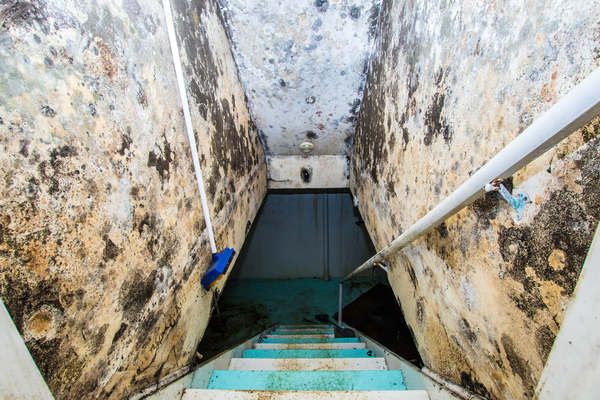 With the Bureau of Meteorology tipping another wetter than usual spring and summer, and as humidity levels rise statewide, workplaces are reminded to guard against harmful mould build-up.
With the Bureau of Meteorology tipping another wetter than usual spring and summer, and as humidity levels rise statewide, workplaces are reminded to guard against harmful mould build-up.
People with normal immune systems are unlikely to be affected by mould. However, for those with an allergy to mould, asthma or lung disease, the elderly, or those with chronic diseases like diabetes, or with low immunity, mould exposure may cause health problems.
People can be exposed to mould through inhalation, skin contact or ingestion. The health effects include:
- irritation of the eyes, nose, throat and skin
- allergic reaction in people with a mould allergy (e.g. asthma flare-up or hay fever symptoms).
- hypersensitivity pneumonitis—a rare lung disease where the lungs become inflamed due to an allergic reaction to certain inhaled substances (e.g. organic dust, fungus, mould or chemicals)
- infection.
Mould is not usually a problem in indoor environments unless there is a source of water or excess moisture that allows it to grow. Mould growth in buildings can be prevented by controlling water intrusions and excess moisture. For example:
- keep mould-susceptible building materials dry during construction
- ensure adequate drainage around buildings
- regularly inspect and maintain the building and its fixtures and undertake repairs promptly to prevent water damage
- maintain heating, ventilation and air-conditioning (HVAC) systems and make sure these are set to the environmental conditions
- manage water vapour and condensation, especially in high water vapour areas such as bathrooms and showers
- clean up wet areas and water damage promptly (within 24-48 hours).
Mould sometimes is detected by a musty, unpleasant odour particularly when it has contaminated wall cavities, ceiling spaces or is under carpets or floor coverings. Any building materials such as plasterboard or carpets that becomes wet due to leaks or flooding will eventually deteriorate if not dried out quickly. Activities such as drilling inspection holes in walls to look for water damage or mould growth may disturb mould and cause it to spread to other areas, if not properly managed.
If porous materials cannot be completely dried out within 48 hours, the materials may need to be replaced to prevent mould and bacteria growing. If you suspect mould contamination but cannot source the problem, or if you have taken measures to prevent mould from growing and still have problems, you can employ a professional such as an occupational hygienist or environmental hygiene specialist.
Cleaning mould contamination
- Restrict access to the affected area and where possible schedule the work for when the building is not being used.
- If there has been water intrusion, dry out the wet area as soon as possible. Fans, wet vacuums, dehumidification units, heaters or air-conditioners on dry mode can be used to speed up the drying process.
- Thoroughly clean contaminated hard surfaces and materials using water and detergent (soapy water) or a vinegar solution and dry completely. Clean all tools and equipment after use.
- Discard porous materials (e.g. ceiling tiles, plasterboard, insulation and carpets) that can't be readily cleaned, have been wet for more than 48 hours or have visible mould growth. Seek professional advice about restoring damaged items that are valuable or irreplaceable.
- On completion, do a final clean-up to remove any dust that may have settled within the affected area or nearby.
If mould keeps returning despite repeated cleaning, seek professional advice to identify if there are any other underlying water or excess moisture problems that are causing the mould to return. If water or excess moisture is found, the issues need to be fixed or the problem will return.
It is important to properly capture, contain or suppress potentially contaminated dust to prevent mould spreading to other areas. Control measures will depend on the extent of mould contamination and disturbance:
- Isolate the affected area:
- Shut doors and windows leading to other work areas.
- Seal supply and return air vents or shut down the HVAC system servicing the area.
- Use floor to ceiling plastic sheeting with sealed edges.
- Where a higher level of containment is needed, set up a negative pressure enclosure and incorporate a decontamination chamber.
- Prevent dust becoming airborne:
- Use cleaning methods that minimise dust. Dry sweeping, household vacuums and compressed air generate large amounts of dust and should be avoided.
- Use ventilation controls (e.g. fit power tools with H class dust extraction, use a HEPA-filtered air scrubber).
- Contain mould-contaminated materials and debris prior to removal for disposal or decontamination off site.
For Workers
Workers who work with mould should wash their hands thoroughly with soap and running water:
- before eating, drinking and smoking
- after contact with mould
- after removing PPE.
Provide workers with information about:
- health risks from work with mould
- safe work procedures
- proper selection and use of PPE.
Wear PPE to protect against exposure to mould and to prevent the spread of mould to other areas.
For low risk situations this should include:
- a properly fitted particulate respirator (P2 or higher)
- disposable gloves.
For higher situations this should also include:
- protective clothing
- safety eyewear
- shoe/boot covers.
Take care to avoid heat stress when wearing multiple items of PPE, especially when working in hot and humid conditions.
For further information, view the WorkSafe QLD article about mould here





